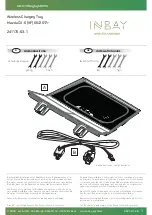
VEHICLE CHARACTERISTICS
4WD Systems (if equipped)
Your vehicle may be equipped with a Four Wheel Drive (4WD) system.
With the 4WD option, power will be delivered to the front wheels and
distributed to the rear wheels as needed. This increases traction which
may enable you to safely drive over terrain and road conditions that a
conventional two-wheel drive vehicle cannot. The 4WD system is active
all the time and requires no input from the operator.
For 4WD vehicles, a spare tire of a different size other that the tire
provided should never be used. A dissimilar spare tire size (other than
the spare tire provided) or major dissimilar tire sized between the front
and rear axles could cause the 4WD system to stop functioning and
default to front wheel drive.
WARNING:
Do not become overconfident in the ability of 4WD
vehicles. Although a 4WD vehicle may accelerate better than
two-wheel drive vehicle in low traction situations, it won’t stop any
faster than two-wheel drive vehicles. Always drive at a safe speed.
How your vehicle differs from other vehicles
SUV and trucks can differ from
some other vehicles in a few
noticeable ways. Your vehicle may
be:
•
Higher – to allow higher load
carrying capacity and to allow it
to travel over rough terrain
without getting hung up or
damaging underbody components.
•
Shorter – to give it the capability
to approach inclines and drive
over the crest of a hill without
getting hung up or damaging
underbody components. All other
things held equal, a shorter
wheelbase may make your vehicle
quicker to respond to steering inputs than a vehicle with a longer
wheelbase.
2009 Mariner Hybrid
(mhv)
Owners Guide, 1st Printing
USA
(fus)
Tires, Wheels and Loading
165
















































